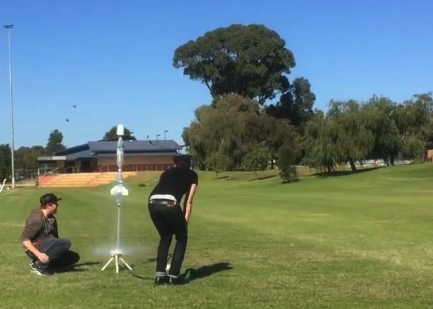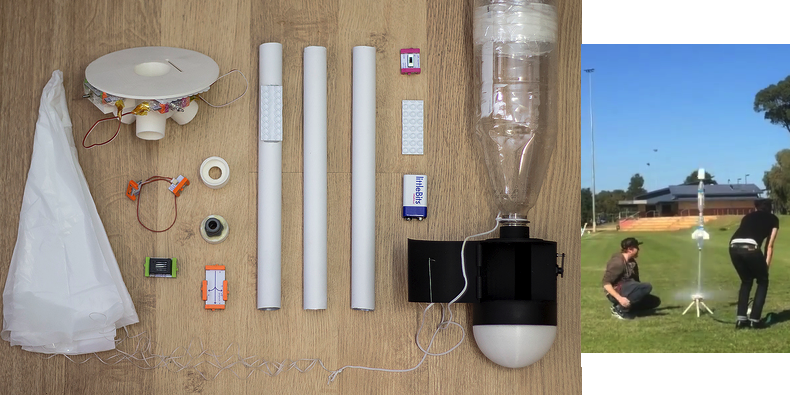
When you combine 3D printing with up-and-coming computer systems and electronic devices such as Arduino, Raspberry Pi, and littleBits, virtually all the resources needed for “makers,” designers and engineers to bring their ideas to fruition are now readily available.
One man, named Leo Rolph, from Western Australia, had an idea for the ultimate water rocket launching system, including a parachute deployment system. Thanks to 3D printing, littleBits and some household items that can be found virtually anywhere, he was able to turn this idea into a real working product.
To create the rocket launchpad, the parachute module, and rocket coupling, Rolph designed them using 3D modeling software, and then used Shapeways to have them 3D printed. At the same time though, these pieces could have also been printed on any standard desktop 3D printer.
LittleBits controls the electronic end of the rocket launching process as well as the parachute deployment, while two PET water bottles are assembled together to create the body of the rocket itself. Additionally, several PVC pipes are used in order to create legs for the launchpad. The parachute? It is simply made of a plastic bag, which uses normal dental floss as the cords. The fins for the rocket are fabricated either out of foam board or balsa wood, depending on the look and feel you are going for.
Once the rocket, the launcher and the parachute deployment system are constructed, the rocket itself is filled about 1/6 of the way full of water, it is placed on the launchpad and pumped up to about 80-100 psi. Then the littleBits switch is turned on, and the rocket will soar into the sky. When the parachute deployment systems is tilted as the rocket begins its descent, the parachute automatically is deployed, helping the rocket land safely with no damage.
“I wanted to keep this project simple, focusing on an easily made and fun project,” Rolph explains. “We used only the parts we needed and really showed the power and potential of simple mechanics, imagination and some well-designed, hardy, seemingly indestructible and versatile Littlebits.”
As you can see in the videos below, this system works quite well, and virtually anyone can replicate it with a little 3D printing, LittleBits, and some easily obtainable household items. What do you think? Will you be attempting to recreate this water rocket yourself? Discuss in the LittleBits 3D Printed Water Rocket System forum thread on 3DPB.com.
